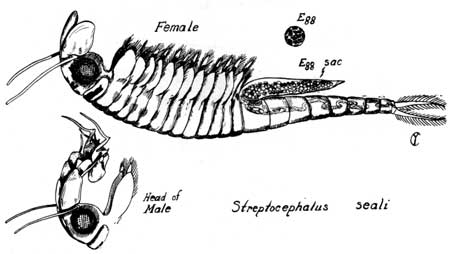|
Volume XVIII - 1952
Photographing The Martens
By Florence Welles
My husband and I sometimes think that as photographers we are like
fishermen with stories of "the big one that got away." For several days
we thought that this was to be the case with the martens. Martes
caurina caurina, related to the weasel and the mink, was reported by
the "powder man" who was a member of the road crew working on the rock
slide at Anderson Point. This slide kept the Rim Road from being open
all the way. We were told the interesting fact that a marten would come
out every day while the men were having lunch to share their meal with
them. Furthermore, to top this tantalizing bit of information, it seems
that the day before the report was made, the marten had come out from
under her usual rock followed by four frisky young martens.
There followed many discouraging days during which we would leave
for Anderson Point whenever time could be spared, but without result. It
seemed impossible that the martens stopped appearing the exact day we
started trying to photograph them. Then, on August 16th, with a day to
devote to it, we began our watch at nine in the morning. At noon, at
three-thirty and from then on until dark the martens were back and forth
and in and out. Fortunately, they paused from time to time, because when
they were in motion we were not able to focus our cameras on them, so
swift and undulating were their movements. The kodachromes that we
obtained of this family of martens will be available for use in the
naturalist lectures during 1953.

Pen and ink sketch of Fairy Shrimp by Ranger-Naturalist
Charles F. Yocum.
Fairy Shrimp
By C. Warren Fairbanks, Ranger-Naturalist
On July 27, while making some investigations of a group of small,
shallow ponds on top of Whitehorse Bluff, the author, with Assistant
Park Naturalist Donald S. Farner and Ranger-Naturalist James Kezer,
found all five of the ponds visited thickly populated with fairy shrimp.
Fairy shrimps belong to the animal group known as phyllopod crustaceans
-- small relatives of the crayfish, crab, and lobster. Many species of
them are found only during the spring season, frequently in temporary
ponds which may be in existence for only a few weeks. They emerge
rapidly from eggs which were laid the previous season, soon grow to
maturity, mate, lay their eggs, and thus complete their cycle.

Ranger-Naturalist Fairbanks collecting in a temporary
pond on Whitehorse Bluff. Photograph by Art C. Toth.
|
The Whitehorse ponds, four of which were sampled, lie at an
approximate elevation 6250 feet above sea level. They are mostly
temporary, and some of the basins were completely dry before mid-August.
At the time of the first visit to them, they were being fed by water
from melting snowbanks along their shores. None was over thirty inches
deep, and they were nestled in a forest of lodgepole pine and mountain
hemlock.
The first pond, so-called North Whitehorse Pond, did not at first
appear to have any of the fairy shrimp, and none were noticed until we
had moved on to the second. Closer examination of the first sample,
however, revealed a large number of very small, immature specimens. It
may possibly be that this pond was formed later than those in which
older individuals were found, although there was no further evidence to
indicate that this was the case.
All specimens mature enough to be identified proved to be
Streptocephalus seali (See Figure). Thanks are due Dr. Ralph W.
Dexter, Professor of Biology at Kent State University, Kent, Ohio for
the identification. Thanks are due also to Ranger-Naturalist Charles
Yocom for the illustration which accompanies this note.
This same species was found by Ranger-Naturalist Kezer in Lake West,
a small, permanent body of water about a mile beyond the park boundary,
just outside the northwest part of Crater Lake National Park. He first
observed them there during the last week in September, 1951, when they
occupied the entire lake. On July 24, 1952 he again found them. This
time, however, they were confined to the northwest section of the
lake.
|

